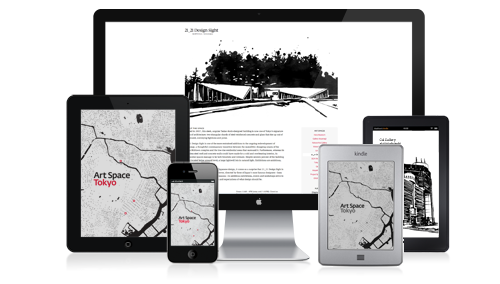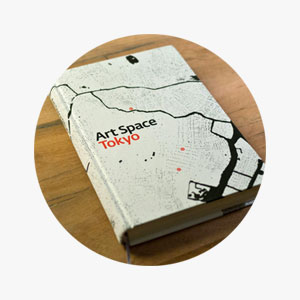
HIDEKI AOYAMA, director
Born in Tokyo in 1968. After working at Gallery Takarashi from 1990 to 1995, he started working at Mizuma Art Gallery in 1996. In 2004 he opened Aoyama | Meguro. Following the gallery’s move to its current location in 2007, he has been collaborating with architectural unit Sschemata under the name ‘happa.’
How did you come to work in the art world?
HAWhen I was a student I liked to go and see art as a normal art fan, but I was working as a bartender back then. I went to the United States on holiday for about a month, but when I came back, the bar that I had been working at had closed down. The owner introduced me to his friends who were running bars and so on, but I felt it was time to explore other kinds of work. I applied to some galleries and got a part-time job that I kept for four years at Gallery Takarashi. It was that coincidence that eventually led me to what I am doing now: it wasn’t like I had always dreamed of working in the art world.
What led you to work at Mizuma Art Gallery?
HAThe first gallery that I worked at gave me all sorts of opportunities to go on business trips to France and learn about Impressionism and the Ecole de Paris. However, in the end I lost interest in that type of art. I had become acquainted with a gallery owner in London, and he invited me to work for him as his assistant for three months in 1995. He showed at a lot of art fairs; three months was only a short time but I learned a lot from the experience and began to connect with contemporary art through it. After I came back to Japan, Sueo Mitsuma asked me to help him out at his gallery. I ended up working there for nine years.
How did the contemporary art scene change during those years?
HAThose years were driven by the need for sales. Right now Mizuma Art Gallery is doing really well, but back then the whole contemporary art scene was struggling and the focus of activity was largely on trying to sell. It’s only since I left Mizuma Art Gallery in the summer of 2004 that the art market started to pick up.
Last year was the first year that buying contemporary art came to be perceived as a relevant shopping activity and not just a trend. The contemporary art market has increasingly been the focus of the popular media, and even business journals are writing about it. However, this current period of growth is not the same as the 1980s bubble: even if we’re hit by another economic recession, the art market is more stable this time around because buying contemporary art has become a more broadly accepted custom in Japanese society.
In terms of trends in art, I couldn’t say for sure or make a generalization since trends in the art world are becoming increasingly diversified. However, one thing is that in spite of this diversification of trends, the ratio of high-quality works to low-quality works hasn’t changed in the last fifteen to twenty years.
What was your experience of setting up your own gallery?
HAAoyama | Meguro’s first space, which opened in late 2004, was a small, ten-square-meter section of an apartment I was sharing with some friends in Meguro. It was a normal residential area, so at first we only allowed visitors on an appointment basis. We stayed there for about a year, and showed the work of artists Koki Tanaka and Junya Sato, but we didn’t really expect many people to come. However, they sent the address out to people they knew, and that led to a surprisingly large number of visitors coming, even some from overseas. At that point I realized that even though a gallery might be very small, it’s good for artists to be associated with a specific space because that way, many people will actually contact them and come to look at their work.
How did you go from that apartment to this location?
HAAfter that first year, we moved to another space behind the Meguro Museum of Art, but immediately after we moved, we were evicted from the building. Never knowing exactly when we were going to be kicked out made it really hard to plan any exhibitions. Instead, artists and people from galleries would come and hang out every day, and that lasted for about a year, during which we did at least manage to hold two exhibitions. When it came to finding a new location, we looked at properties all over the city, and then the real-estate agent told me that there was something available in Meguro. It made sense since I was already based here. I had walked past this building many times in the past — it used to be a delivery company’s office — and I always thought the space was great, so I immediately jumped at the chance to move here.
How do Aoyama | Meguro and architectural unit Sschemata share the space?
HAAs a collective, we’re called happa, and we use this space to show architectural prototypes made by engineers and craftsmen such as lighting equipment and so on — things that people don’t usually get to see in the process before mass production. We exhibit these works not merely as products, but as a sort of installation. At the same time, this space also functions as Aoyama | Meguro, to show the artists that I represent. We have separate offices, but the space itself interchanges between Aoyama | Meguro and happa depending on the event.
What kind of art does Aoyama | Meguro handle?
HAPrimarily I work with conceptual art. But it has to be visually interesting at the same time. I say ‘conceptual’ but more specifically what I mean is that it has to be artwork that doesn’t clearly reveal its history or background. In other words, it doesn’t matter what media the work is, whether it was made by a Japanese person or a foreigner, whether they are young or old, male or female, dead or alive: I’m looking for artwork that doesn’t give these facts away. When the background to the artwork is a mystery, the artist’s connections and schooling become irrelevant. Only works of truly high quality can stand up to scrutiny on their own.
How did you become interested in conceptual art?
HAIt was back while I was a student. Although I didn’t study art, I traveled a lot and saw a lot of exhibitions in Europe and the United States. In 1990, I was in New York, where I saw an exhibition by Vito Acconci. I knew nothing about the artist, but I was deeply moved by his work. I had seen some shows of his in Japan, but the scale of this exhibition was so much bigger and it had a powerful effect on me. One of the pieces on display was a massive sculpture of a bra — so big that you couldn’t tell what it was. I only realized that it was a bra later, and then much later, after I had started working in the art world, I realized which specific artwork I had seen that day: Adjustable Wall Bra. From the beginning I was attracted to things that are amazing for no apparent reason. I mean, even people who aren’t all that interested in art would look at this work and be amazed. I saw this work when I was nineteen or twenty and it still affects the way I work today.
How do you find artists?
HAIt’s always a very natural process. There have been times when I’ve built relationships with artists whose artwork I have already seen at an exhibition or art fair somewhere, but those shows wouldn’t be the only reason for the connection with them. Seeing their work is only one factor among a continuous series of events that gradually leads to something more significant. I don’t specifically go to biennials or art fairs with the intent of finding artists: encounters of that kind have never led to anything.
Aoyama | Meguro is part of the ‘New Tokyo Contemporaries’ group of seven young galleries. How did this group form?
HATo put it simply, we’re all galleries that have opened since 2004. We’ve just begun and we don’t have much of a budget to participate in art fairs, so this collaboration is a form of advertising. Like me, all of the directors of these galleries opened their spaces after working at other galleries in Tokyo, so we’ve known each other for a while. We’ve established our galleries based on experience rather than as venture operations. Last autumn we were talking about holding an art fair, but the space we had available is far too small for a full-size art fair. That was how the venues were decided — it was all very impromptu, kind of like a session band. The event itself will not just be a typical art fair with the sole aim of selling, but a curated event with performances and so on.
What do you think is the most important approach that these new galleries have to take to push the Tokyo art scene to the next stage?
HAI think that people simply want to see good art. There are all these works out there that have won art awards and have been shown at biennials and art fairs — it’s as if they have been stamped with these badges of merit, but this is not necessarily intelligent art. I would like to contribute to creating a fairer art environment, where truly good art can be shown and can make a direct connection with the audience.

